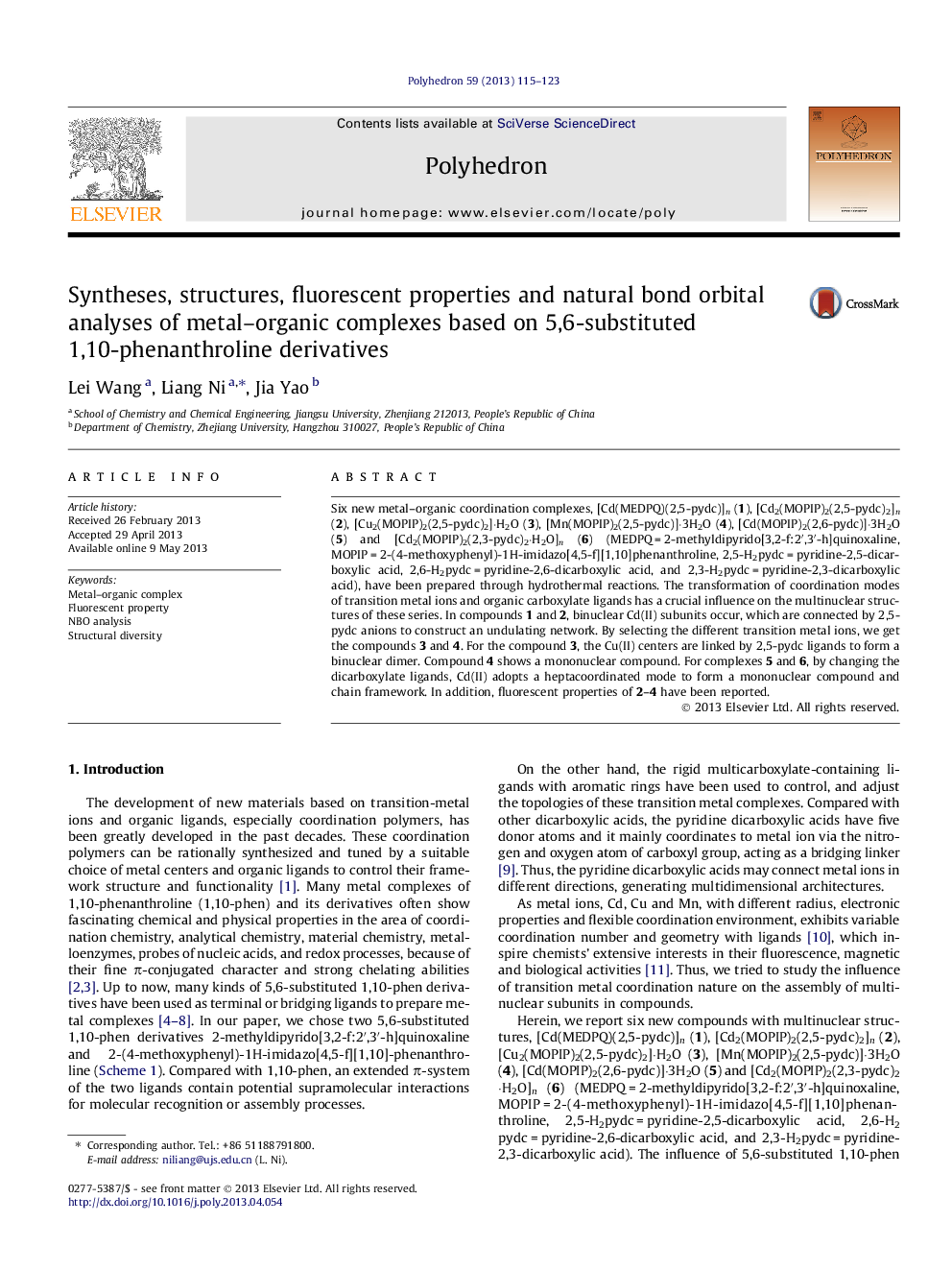| کد مقاله | کد نشریه | سال انتشار | مقاله انگلیسی | نسخه تمام متن |
|---|---|---|---|---|
| 1335747 | 1500280 | 2013 | 9 صفحه PDF | دانلود رایگان |

Six new metal–organic coordination complexes, [Cd(MEDPQ)(2,5-pydc)]n (1), [Cd2(MOPIP)2(2,5-pydc)2]n (2), [Cu2(MOPIP)2(2,5-pydc)2]·H2O (3), [Mn(MOPIP)2(2,5-pydc)]·3H2O (4), [Cd(MOPIP)2(2,6-pydc)]·3H2O (5) and [Cd2(MOPIP)2(2,3-pydc)2·H2O]n (6) (MEDPQ = 2-methyldipyrido[3,2-f:2′,3′-h]quinoxaline, MOPIP = 2-(4-methoxyphenyl)-1H-imidazo[4,5-f][1,10]phenanthroline, 2,5-H2pydc = pyridine-2,5-dicarboxylic acid, 2,6-H2pydc = pyridine-2,6-dicarboxylic acid, and 2,3-H2pydc = pyridine-2,3-dicarboxylic acid), have been prepared through hydrothermal reactions. The transformation of coordination modes of transition metal ions and organic carboxylate ligands has a crucial influence on the multinuclear structures of these series. In compounds 1 and 2, binuclear Cd(II) subunits occur, which are connected by 2,5-pydc anions to construct an undulating network. By selecting the different transition metal ions, we get the compounds 3 and 4. For the compound 3, the Cu(II) centers are linked by 2,5-pydc ligands to form a binuclear dimer. Compound 4 shows a mononuclear compound. For complexes 5 and 6, by changing the dicarboxylate ligands, Cd(II) adopts a heptacoordinated mode to form a mononuclear compound and chain framework. In addition, fluorescent properties of 2–4 have been reported.
Under hydrothermal conditions, we prepared five new metal–organic coordination complexes by combining transition metal salts together with organic carboxylate anion ligands. Different metal centers (Cd, Cu and Mn) adopt variable coordination numbers and versatile coordination modes to construct complexes 2–4 with different structures and dimensions. The 2,5-H2pydc, 2,6-H2pydc and 2,3-H2pydc possess different steric hindrance, which result in the different coordination modes of the carboxylate ligand. Three types of coordination structures (layer, cluster and chain) have been observed in complexes 2, 5 and 6. In addition, fluorescent properties of complexes 2–4 have been reported.Figure optionsDownload as PowerPoint slide
Journal: Polyhedron - Volume 59, 1 August 2013, Pages 115–123